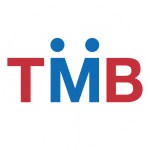The federal funds rate refers to the interest rate that banks charge other institutions for lending excess cash to them from their reserve balances on an overnight basis. The Fed meets roughly eight times a year to discuss potential adjustments to the federal funds rate, based on the economy’s current conditions. For instance, the Fed announced two emergency rate cuts in March to help combat the negative economic impact of the coronavirus. These rate cuts resulted in a decrease in the federal funds rate, which in change lowered the prime rate and the interest rate for many consumer financial products. Banks generally use fed funds + 3 to determine the current prime rate. The rate forms the basis for other interest rates, including rates for mortgages, small business loans, or personal loans.
When the fed funds rate is high, other interest rates will go up too. This makes the costs of borrowing more expensive, which makes the cost of goods and services more expensive. This means that consumers will slow down spending because of the higher prices, which in turn will slow down the economy.
The rate is one of the most important pieces of financial data in the U.S. Financial institutions are required to maintain interest-bearing accounts at Federal Reserve banks to ensure they have enough money to cover depositors’ withdrawals and other obligations. Any money in their reserve that exceeds the required level is available for lending to other banks that might have a shortfall. While each bank sets its own prime rate, the average consistently hovers at three percentage points above the funds rate. Consequently, the two figures move in virtual lock-step with one another.
What Is the Current Prime Rate?
They borrow fed funds from each other to fulfill the Fed’s reserve requirement each night. The prime interest rate is the percentage that U.S. commercial banks charge their most creditworthy customers for loans. Like all loan rates, the prime interest rate is derived from the federal funds’ overnight rate, set by the Federal Reserve at meetings held eight times a year. The prime interest rate is the benchmark banks and other lenders use when setting their interest rates for every category of loan from credit cards to car loans and mortgages. Whenever the prime rate rises, variable credit card rates rise, too. That’s why you should pay close attention to when the Fed raises or lowers the fed funds rate.
“This is unlike other rates that move daily/weekly according to short term financial market, supply and demand conditions,” says Garretty. While the prime rate affects the interest rate lenders set for financial products, you can still influence the rate you receive by improving your credit score. The higher your credit score, the better (and lower) interest rates you’ll receive on existing accounts with variable rates, as well as new account openings. The FOMC, which is the policymaking body of the Federal Reserve System, meets eight times a year to set the target federal funds rate, which is part of its monetary policy. The Federal Reserve adjusts the fed funds rate to influence other interest rates.
What is the prime rate, and does the Federal Reserve set the prime rate?
One of the most used prime rates is the one that The Wall Street Journal publishes daily. As noted above, banks generally use fed funds + 3 to determine the prime rate. The federal funds rate is one of the most important interest rates in the U.S. economy.
- Banks were afraid of getting subprime mortgage debt as collateral from each other.
- If a bank expects to have end-of-the-day balances greater than what’s required, it can lend the excess to an institution that anticipates a shortfall in its balances.
- When the Fed buys or sells government securities in the open market, it adds or reduces the amount of cash in circulation.
- This way, the Fed dictates the price of borrowing among commercial banks.
- As the crisis unfolded, many hesitated to lend or feared that other banks wouldn’t be able to pay back their obligations.
- The Intercontinental Exchange (ICE) group asked several large banks how much it would cost them to borrow from another lending institution every day.
But the prime rate is only one factor among several that determine how much you’ll pay for loans. Banks also take into account your creditworthiness—the more likely you are to pay them back, the lower the rate they would charge and vice versa. Fixed-rate financial products, such as many personal loans and auto loans, won’t fluctuate since you lock in your interest rate when you open the loan. LIBOR, the fed funds rate, and the prime rate do tend to move in tandem, however. The three-month LIBOR rate is often a few tenths of a point above the fed funds rate. The federal funds rate is used by the Fed to control monetary policy and is watched closely by investors to gauge how the market may move in the future.
While some factors are outside of your control, you can still be informed about the current prime rate and how banks decide on it. Below, Select breaks down what you need to know about the prime rate and how it affects your finances. But what exactly the prime rate is fluctuates based on changes in the economy, such as a recession like the one brought about by the coronavirus pandemic. The move, a response to the economic turmoil in 2020, marks only the second time the benchmark rate has been cut to virtually zero. That prime rate is the starting point for all other interest rates, which are set at the prime rate plus an additional percentage. The rate that an individual or business receives will vary depending on the borrower’s credit history and other financial details.
This includes credit cards as well as variable rate mortgages, home equity loans, personal loans, and variable interest rate student loans. When the prime rate goes up, so does the cost to access small business loans, lines of credit, car loans, certain mortgages and credit card interest rates. Since the current prime rate is at a historic low, it costs less to borrow than in the past.
The term federal funds rate refers to the target interest rate range set by the Federal Open Market Committee (FOMC). This target is the rate at which commercial banks borrow and lend their excess reserves to each other overnight. The fed funds rate is the overnight rate banks and other financial institutions use to lend money to each other. The process is a constant electronic flow of money that ensures that each bank has sufficient liquidity to operate from day to day.
How Has the Prime Rate Changed Over Time?
We are compensated in exchange for placement of sponsored products and services, or by you clicking on certain links posted on our site. Therefore, this compensation may impact how, where and in what order products appear within listing categories, except where prohibited by law for our mortgage, home equity and other home lending products. While we strive to provide a wide range of offers, Bankrate does not include information about every financial or credit product or service. While the interest rate on most financial products is dependent on the prime rate, the actual rate you receive is rarely the same exact amount. Typically, your interest rate is above the prime rate, but the amount can be greater depending on the lender.
When prime rate changes (as a result of the Fed changing the federal funds rate), your credit card APR also fluctuates. The change follows the same pattern as the prime rate — meaning a decrease in the prime rate results in a decrease in your card’s APR. The exact change in your interest rate depends on how much the prime rate changes — take for instance, the two recent adjustments that resulted in .50% and 1% APR reductions. A 1% decrease means a 14.99% variable APR would decrease to 13.99%.
Prime is usually considered the rate that a commercial bank offers to its least risky customers. The Wall Street Journal asks 10 major banks in the United States what they charge their most creditworthy corporate customers. It publishes the average on a daily basis, although it only changes the rate when 70% of the respondents adjust their rate. To understand how decision-making by the Fed—and, more specifically, its Federal Open Market Committee—affects consumer and business loans, it’s important to understand how the federal funds rate works.
For instance, the average credit card APR on accounts assessed interest is currently 15.78% — the prime rate plus 12.53%. That includes adjustable-rate loans, interest-only mortgages, and credit card rates. The rates are often prime plus a certain percentage because banks have to cover the losses they incur on loans that never get repaid. The higher the percentage https://www.tradebot.online/ above prime, the more perceived risk there is. Over the next few decades, the prime rate fluctuated widely, reflecting the ups and downs of the economy and largely mirroring other benchmark interest rates. During times of economic growth, the prime rate tends to be higher, while it tends to be lower during times of recession or financial turmoil.
Many variable-rate financial products are tied to benchmark rates, primarily the prime rate, and until it was discontinued, LIBOR. And while the Fed doesn’t control these rates directly, they do tend to move in the same direction as the federal funds rate. The prime rate is the interest rate that commercial banks charge creditworthy customers and is based on the Federal Reserve’s federal funds overnight rate. When the prime rate goes up, so does the cost to obtain small business loans, lines of credit, car loans, mortgages, and credit cards.
What Loans Are Not Affected by a Change in the Prime Rate?
It was set as high as 20% in the early 1980s in response to inflation. With the coming of the Great Recession, the rate was slashed to a record-low target of 0% to 0.25% in an attempt to encourage growth. The prime rate tends to closely track the federal funds rate over time, and so did LIBOR before it was discontinued. These rates impact how consumers make spending decisions, which in turn impact the overall economy, allowing the Federal Reserve to maintain its objectives in creating a healthy economy. LIBOR was the amount banks charged each other for eurodollars on the London interbank market. The Intercontinental Exchange (ICE) group asked several large banks how much it would cost them to borrow from another lending institution every day.






















